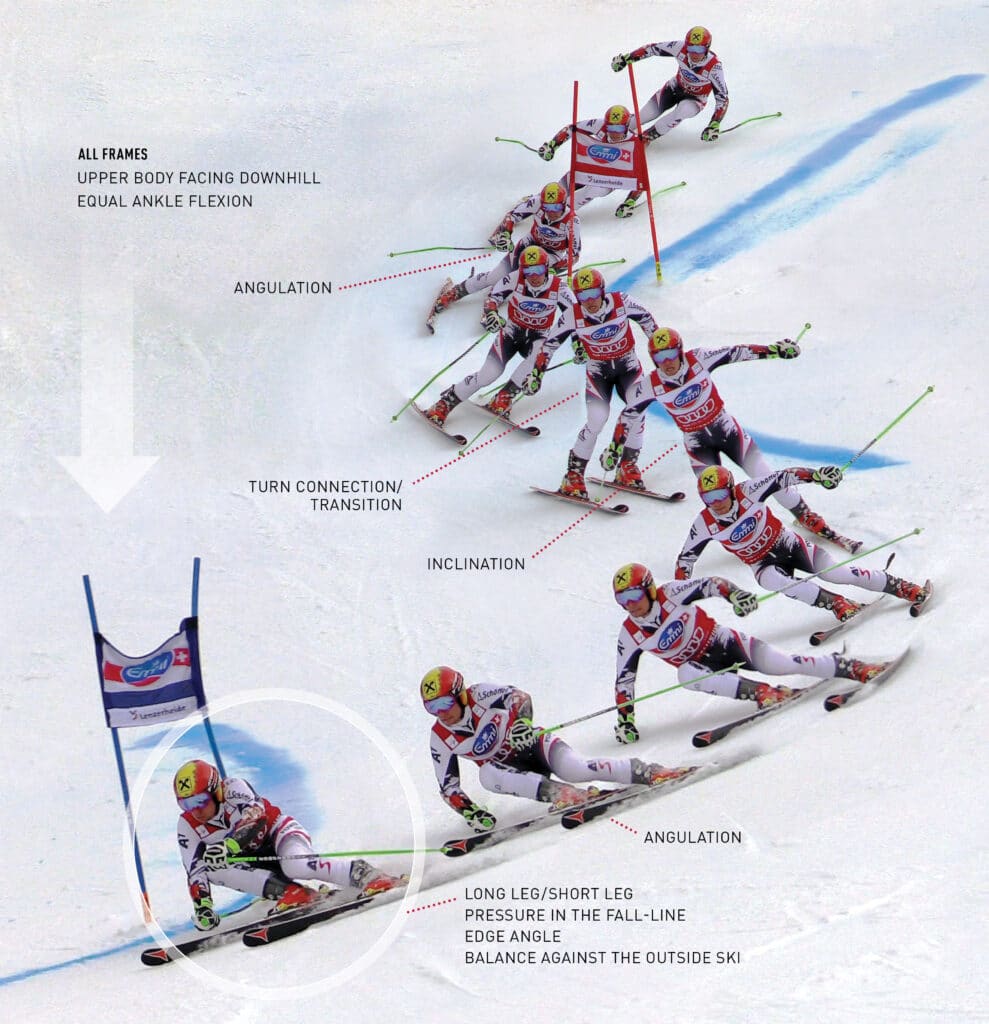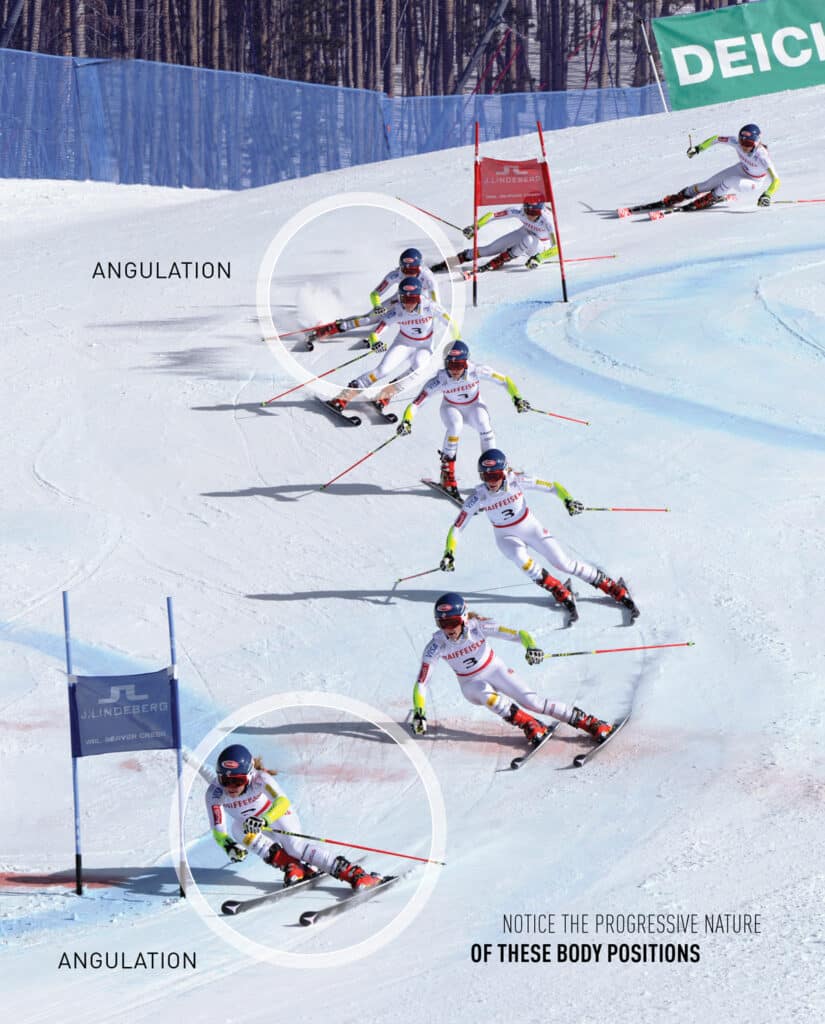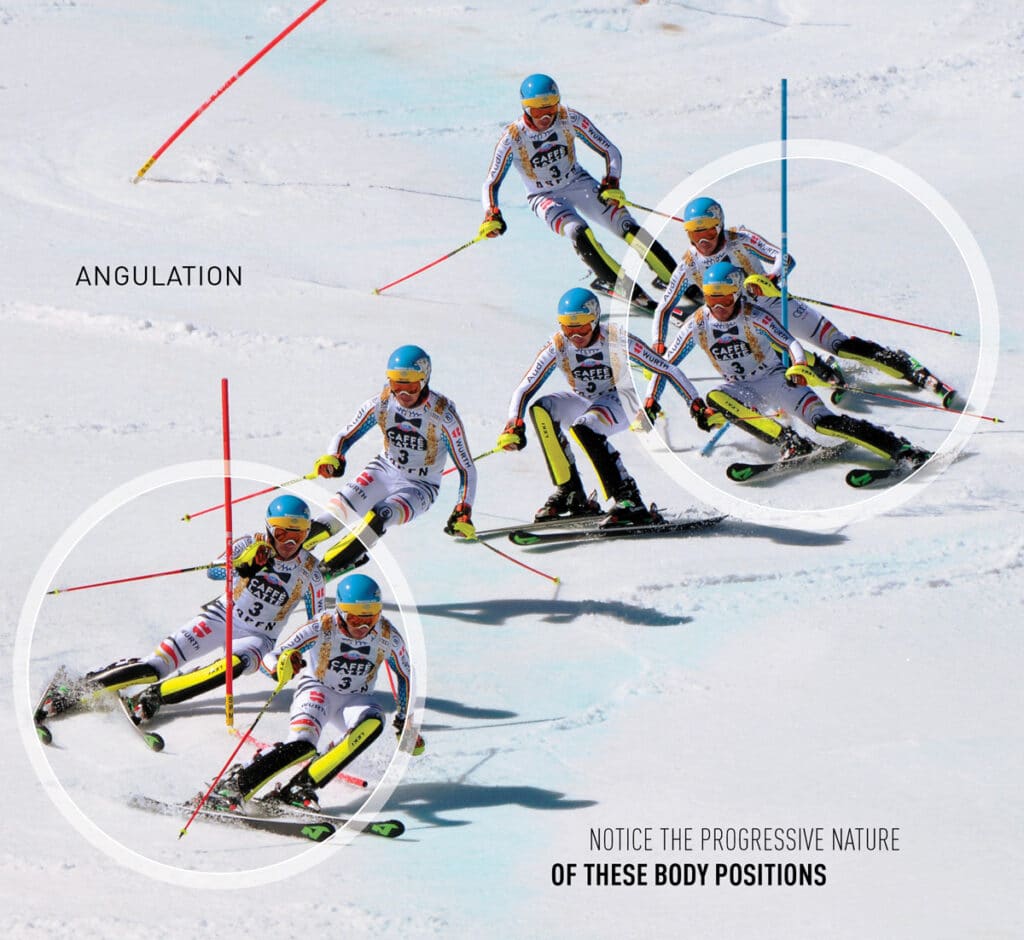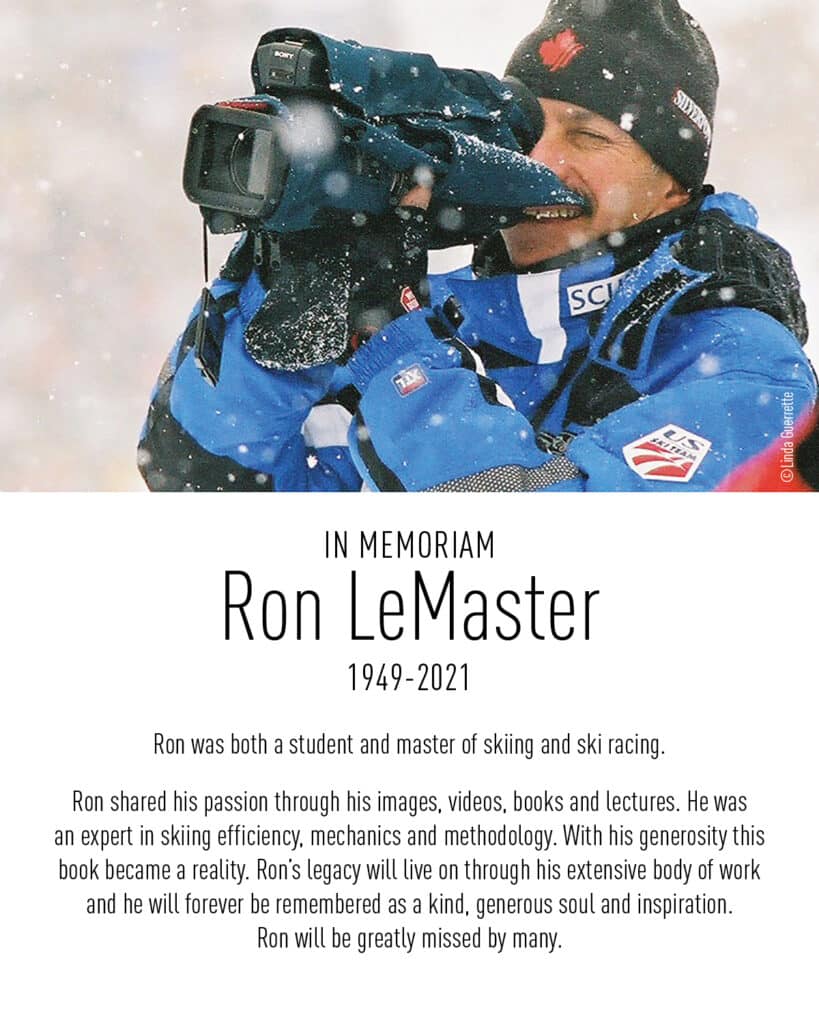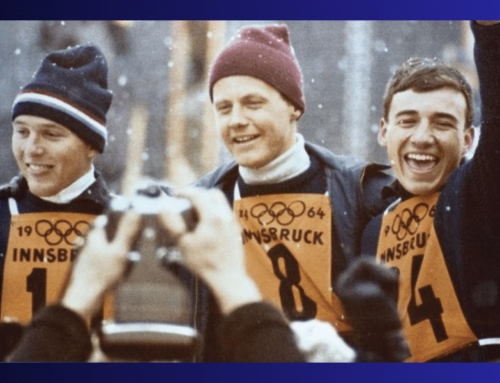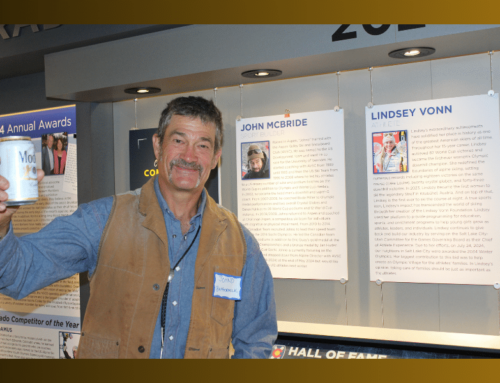Mastering Angulation: Key Ski Racing Technique from The Young Skier’s Guide
Mikaela Shiffrin Photo: GEPA pictures
The Far West Development Initiative (FWDI), supported by Melissa and Martin Huml, created The Young Skier’s Guide: Fundamentals of Ski Racing to support the development of U14 racers, but fortunately, it benefits all ages. Ron LeMaster’s stunning photos and videos lead the teaching, with Ron Kipp’s text offering valuable support. Ski Racing Media is pleased to publish nine articles highlighting the book’s key concepts. The concept covered in this article is angulation, the fifth in the series.
The Role of Photos and Photomontages
The amazing Ron LeMaster photos aim to immerse athletes in the images of ski racers, helping them internalize the technique through their neuromuscular system. Athletes then replicate the “technique” their coaches teach, aligned with these concepts.
The Nine Essential Concepts
- Upper Body Facing Downhill
- Equal Ankle Flexion
- Turn Connection/Transition
- Inclination
- Angulation
- Long Leg/Short Leg
- Pressure in the Fall-Line
- Edge Angle
- Balance Against the Outside Ski
Click on images to enlarge
Angulation
Simple Explanation of Angulation:
The angle between the upper and lower body.
Defining angulation:
Articulation between the pelvis and femur. The bend or flex is a combination of frontal and lateral movements.
When to angulate:
Angulation may happen after inclination has moved the skier’s center-of-mass (CoM) inside the upcoming turn.
Function of angulation:
Angulation creates an impulse of pressure by lining up or directing the line of action with the base of support.
Timing:
Angulation determines the location, length and radius of the arc. Ideally, the peak of the pressure/impulse created by angulation occurs when passing the gate and when the skis are in the fall line.
Order of movements is essential:
Angulation follows inclination. Inclination initiates the edging, followed by angulation, which determines the pressure.
Angulation is not always essential:
The skier must incline to move the CoM and tip the skis. After that, the skier may or may not need angulation. The skier uses angulation not to make the turn but to modify it. Inclination starts the turn, and angulation adapts the posture or balance, so the upper body travels less distance between turns.
Exceptions:
Large-radius turns which are commonly used in speed events.
What to look for:
A primarily lateral angle between the upper and lower body. The skier should align and stack the lower body against the skis. The upper body should be in a more or less anatomical position. The skier should round the spine without pushing the vertebrae to their maximum range of motion. When observed from the front, the shoulders and pelvis (the bib area) should form a moderate rectangle (don’t wrinkle the bib using an exaggerated position, such as lateral flexion of the spine or “breaking at the waste”).
Shortened CoM distance traveled:
With the separation between the upper and lower body, the upper body is more upright relative to the angles of the lower body. This means the upper body will travel less distance than the skis during the turn.
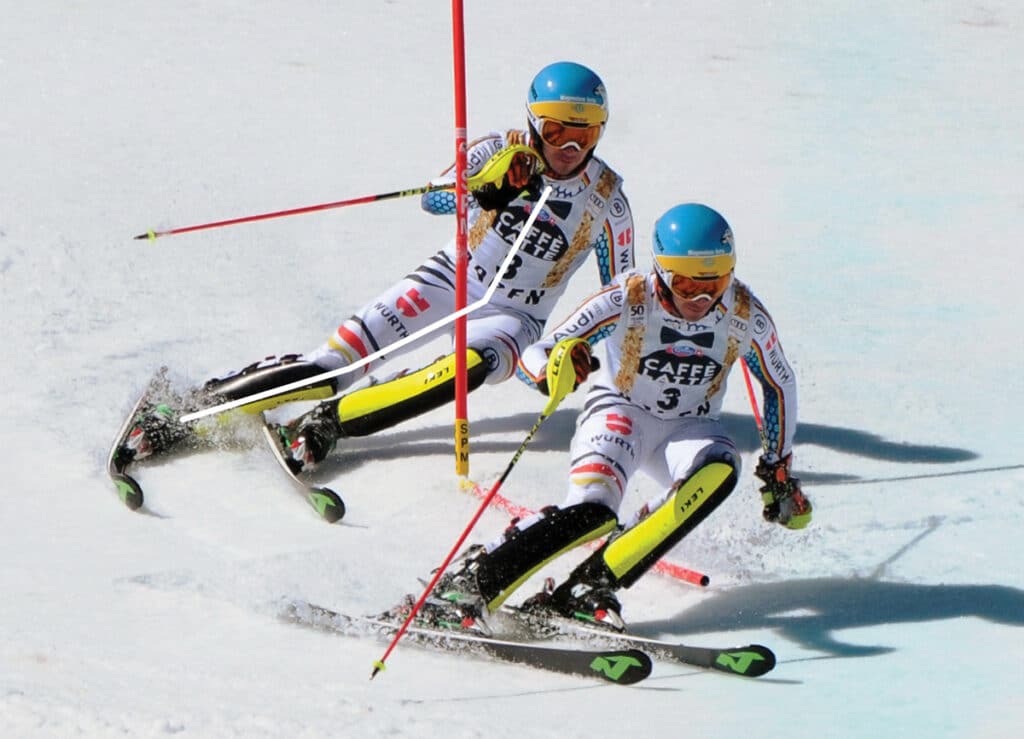
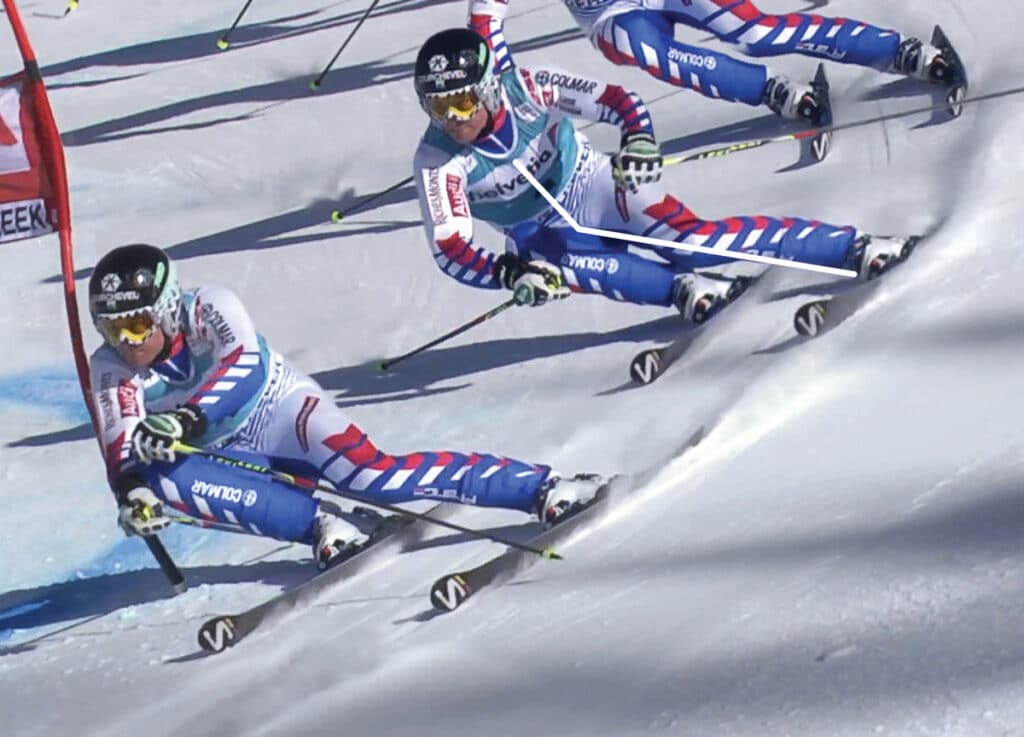
What angulation is not:
It is not a lateral curvature of the spine.
What it looks like if not appropriately executed:
A straight body that has limited upper/lower body separation. The lack of angulation results in banking, an unbalanced and undesirable body lean.
Results of poorly executed angulation:
The skier takes longer in transition, becoming unbalanced and unable to resist external forces effectively. The skidding that results lowers the skier’s line.
Synonyms:
Comma position, “C” shape.
Drills to use to develop angulation:
1000-pole plant drill, javelin, hockey stops, visual acuity drill, Skiing with bamboo for poles, Schlopy drill, carrying the torch, over the shoulder, outside pole drag.
Talking points or cues:
“Feel where you hinge” and “keep a vertical spine line from the front or back view in short-radius turns.”
Do not use these phrases:
“Pinch an inch” or “feel the fat pinch between your pelvis and rib cage.” These phrases encourage an unhealthy lateral flexion of the spine.
